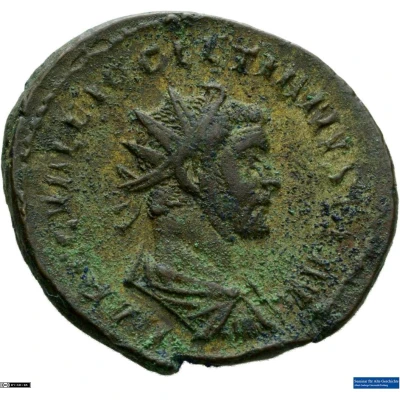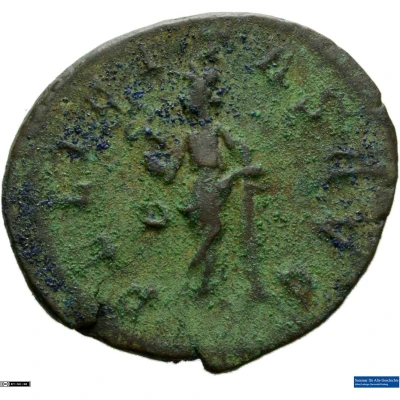


© Münzsammlung des Seminars für Alte Geschichte, Albert-Ludwigs-Universität Freiburg (CC BY-NC-SA 3.0 DE)
Antoninianus - Diocletianus FELICITAS AVG; Felicitas
| Silver | 3.4 g | 20 mm |
| Issuer | Rome › Roman Empire (27 BC - 395 AD) |
|---|---|
| Emperor | Diocletian (Gaius Aurelius Valerius Diocletianus) (284-305) Maximian Herculius (Marcus Aurelius Valerius Maximianus) (286-305) |
| Type | Standard circulation coin |
| Years | 285-293 |
| Value | Antoninianus (1) |
| Currency | Antoninianus, Reform of Caracalla (AD 215 – 301) |
| Composition | Silver |
| Weight | 3.4 g |
| Diameter | 20 mm |
| Shape | Round (irregular) |
| Technique | Hammered |
| Demonetized | Yes |
| Updated | 2024-10-05 |
| Numista | N#305588 |
|---|---|
| Rarity index | 100% |
Reverse
Felicitas, draped, standing left, leaning on column with right arm and holding caduceus in left hand, crossing legs.
Script: Latin
Lettering:
FELICITAS AVG
B/-//-
Translation:
Felicitas Augusti.
Good fortune of the emperor (Augustus).
Comment
Example of this type:Münzsammlung des Seminars für Alte Geschichte, Albert-Ludwigs-Universität Freiburg
Source:
Online Coins of the Roman Empire (OCRE)
Interesting fact
One interesting fact about the Antoninianus - Diocletianus coin is that it was minted during a time of significant economic and political change in the Roman Empire. The coin was issued during the reign of Diocletian, who introduced a number of economic reforms in an attempt to stabilize the empire's economy and address issues such as inflation and debasement of the currency. The coin's design, featuring the image of Felicitas, the goddess of good luck, prosperity, and happiness, may have been intended to promote the idea of a return to prosperity and stability under Diocletian's rule.